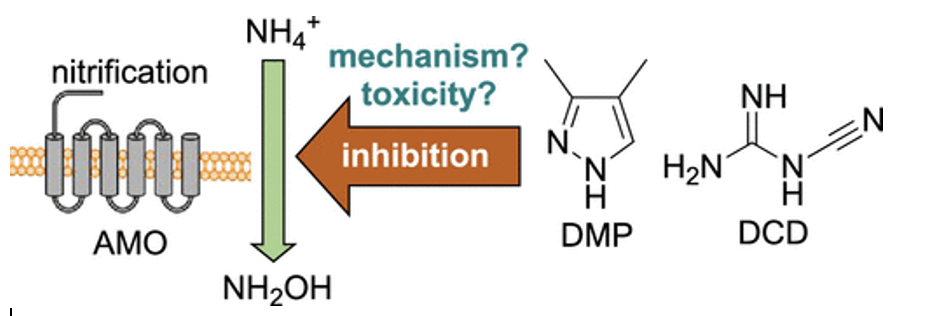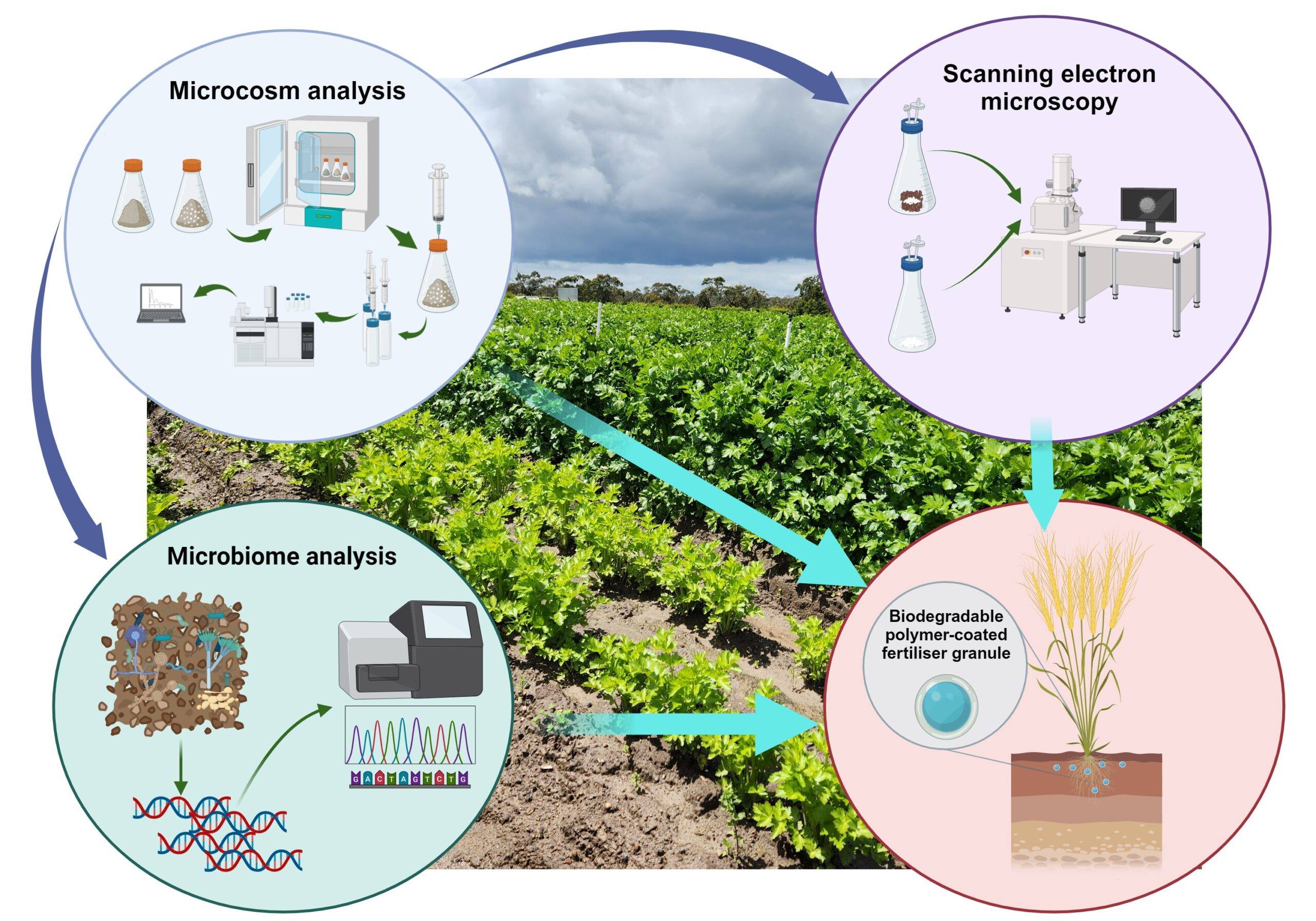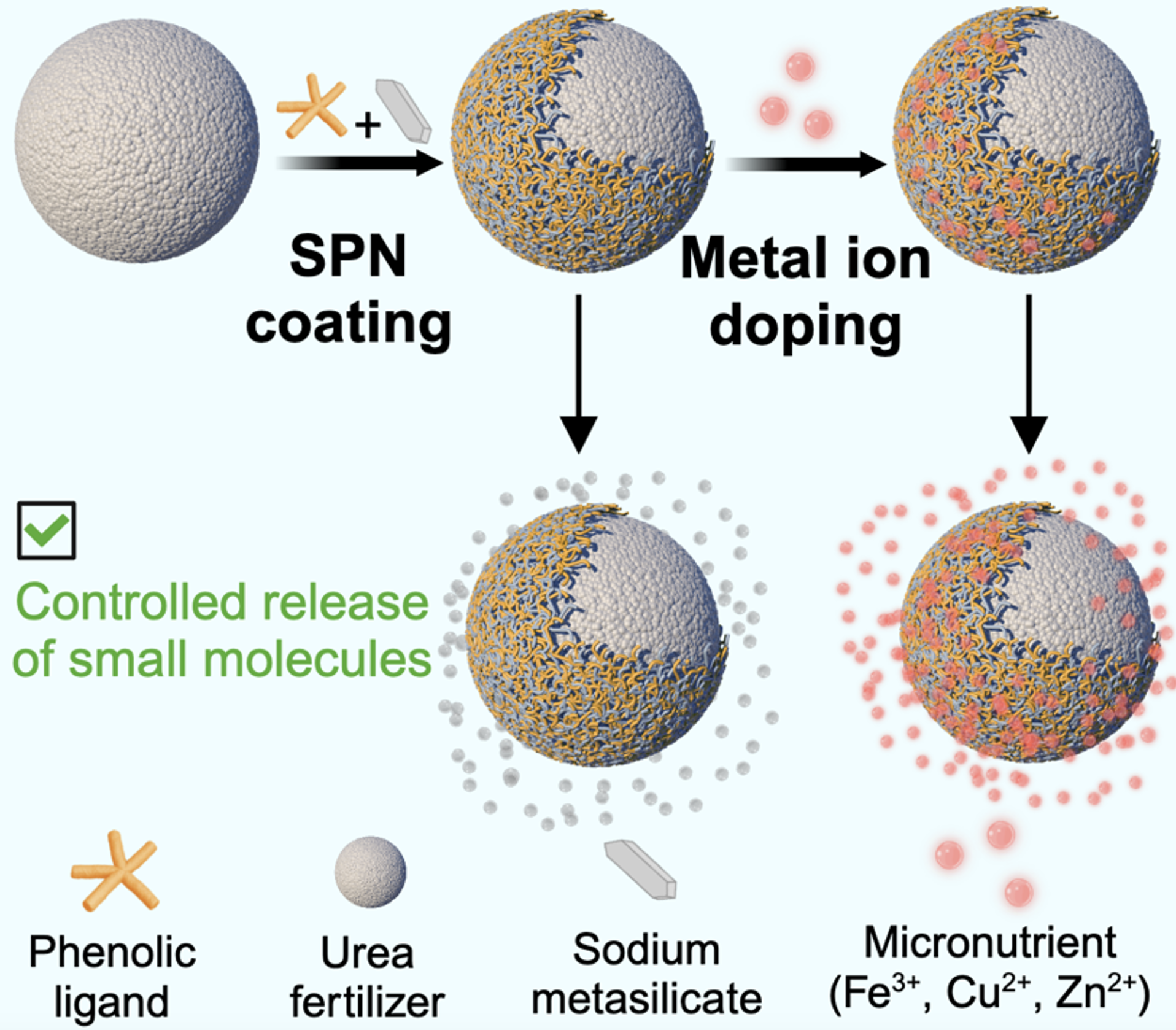Uncovering how nitrification inhibitors work at the chemical level
Nitrogen fertilisation is important for maximising crop yields. However, the nitrogen fertiliser urea is often broken down into a series of byproducts by microorganisms in the soil, which can result in suboptimal levels of nitrogen required by the crops for their growth. In addition this breakdown process can result in environmental problems from increased levels of different nitrogen molecules in the waterways and as greenhouse gases. To slow this breakdown process, the incorporation of nitrification inhibitors (NIs) can significantly reduce the total nitrogen loss and subsequently, the environmental effects of traditional nitrogen fertilisers. However, the mode of action of current commercially available NIs including 3,4-Dimethyl-1H-pyrazole (DMP) and dicyandiamide (DCD) are not well understood. Understanding this mode of action at the chemical level can help inform the development of better NIs.
For the first time, researchers here at the ARC Hub for Smart Fertilisers assessed and detailed the mode of action behind NI inhibition pathways, efficacy, and acute toxicity using cell cultures of bacteria, Nitrosomonas europaea, which are known to promote nitrification.
Based on these bacterial assays, our researchers found that both DMP and DCD inhibitors reversibly target ammonia monooxygenase (AMO), a key enzyme in these bacteria responsible for catalysing the first step in the nitrification process seen in the figure.
Acute toxicity tests also revealed that DCD has a 10% higher toxicity than DMP when comparing treatments at the same inhibition efficacy, indicating that the inhibition of the nitrification process cannot simply be achieved by increasing the inhibitor concentration as it is associated with increased cell death. These studies have provided important molecular insights into how NIs can inhibit AMO, providing a framework to rationally develop more effective NIs in the future.
To read more on this research, click here.
To keep up to date on the Hub’s research, click here to sign up to the newsletter.




